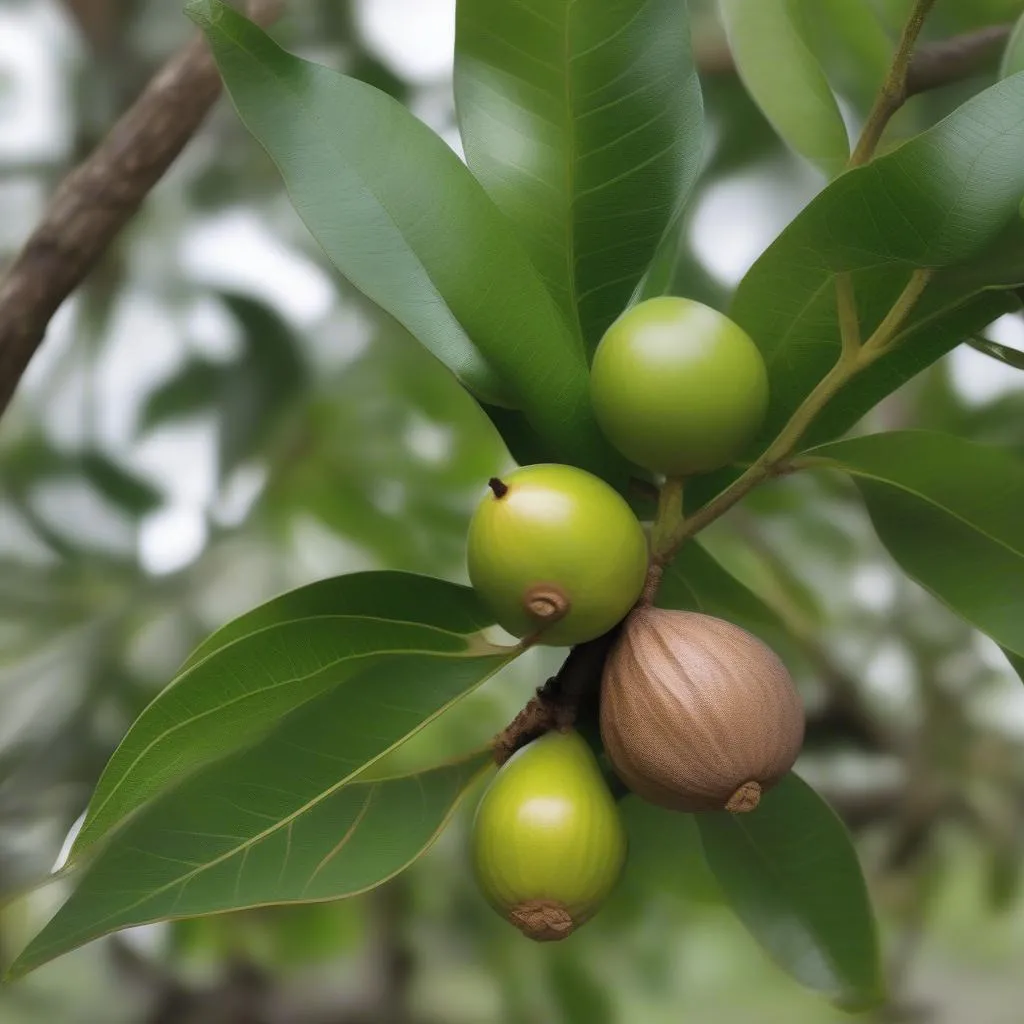The aroma of nutmeg, warm and inviting, evokes memories of cozy kitchens and comforting dishes. This spice, with its distinctive flavor and unique history, has been a staple in cuisines around the world for centuries. Let’s embark on a culinary adventure to discover the magic of nutmeg, exploring its origins, its place in different dishes, and its cultural significance.
Nutmeg: A Spice with a Rich History
Nutmeg is derived from the seed of the Myristica fragrans tree, a native of the Banda Islands in Indonesia. The journey of nutmeg from these islands to becoming a global spice is fascinating. It was highly valued in ancient times for its medicinal properties and its ability to enhance the flavor of food.
The Flavor Profile: A Taste of Nutmeg’s Versatility
Nutmeg’s flavor profile is complex and multifaceted. Its aroma is warm, sweet, and slightly peppery, adding depth to both savory and sweet dishes. The flavor is described as slightly floral with a hint of earthiness.
How to Use Nutmeg in Cooking
Nutmeg is typically used in grated form, though you can also find it in pre-ground powder.
Savory Dishes:
- Nutmeg enhances the flavor of sauces, particularly those made with cream, cheese, or wine.
- It adds warmth and depth to meat dishes, especially those featuring pork, lamb, and poultry.
- A pinch of nutmeg complements root vegetables, bringing out their natural sweetness and earthy notes.
Sweet Dishes:
- Nutmeg is a classic ingredient in desserts, from cakes and cookies to custards and pies.
- It adds a subtle, warm flavor to hot beverages like coffee, tea, and cocoa.
- Nutmeg is also a key ingredient in some traditional spiced punches and holiday drinks.
Other Culinary Uses:
- Nutmeg can be used to make flavored oils and vinegars.
- It can also be added to marinades and spice rubs for meats and vegetables.
Nutmeg in Different Cultures: A World of Flavor
Nutmeg has found its way into the culinary traditions of many cultures worldwide.
Europe: Nutmeg is a staple in European cuisine, particularly in the UK and Germany. It is frequently used in sauces, soups, stews, and desserts.
Asia: In Indonesia, the origin of the nutmeg tree, the spice is used liberally in traditional dishes. It’s found in savory dishes like rendang (a slow-cooked beef stew), as well as in sweet dishes like kolak (a dessert made with sweet potatoes and coconut milk).
Americas: Nutmeg is a popular ingredient in American cooking, particularly in desserts like pumpkin pie and gingerbread cookies.
Nutmeg’s Health Benefits: More than Just Flavor
Beyond its culinary appeal, nutmeg offers several health benefits, including:
- Anti-inflammatory properties: Nutmeg has been shown to possess anti-inflammatory properties, potentially helping to alleviate inflammation throughout the body.
- Antioxidant properties: Nutmeg is rich in antioxidants, which can help protect the body from cell damage caused by free radicals.
- Digestive support: Nutmeg has been traditionally used to aid digestion, relieving symptoms of nausea and indigestion.
Nutmeg in Travel: A Spice that Connects
Nutmeg’s journey from the Banda Islands to tables worldwide is a testament to the power of spice to connect cultures and inspire culinary creativity. It’s a reminder that even the smallest ingredient can have a profound impact on our taste buds and our understanding of the world.
 Nutmeg Tree
Nutmeg Tree
Frequently Asked Questions: Exploring Nutmeg’s Secrets
Q: How can I tell if nutmeg is fresh?
A: Fresh nutmeg should have a strong, pungent aroma and a slightly oily texture. It should also be free of any discoloration or signs of mold.
Q: Can nutmeg be substituted with other spices?
A: While no spice can perfectly replicate nutmeg’s unique flavor, mace, the dried outer covering of the nutmeg seed, shares a similar aroma profile.
Q: Is nutmeg safe to consume in large quantities?
A: Nutmeg contains a psychoactive compound called myristicin. While it is generally safe to consume in moderate amounts, excessive consumption can lead to side effects such as nausea, vomiting, dizziness, and hallucinations.
Travel with Travelcar: Discover the World’s Flavors
Let TRAVELCAR be your guide as you explore the world’s culinary treasures. From the spice markets of Indonesia to the cozy cafes of Europe, we’ll help you discover the stories behind the flavors that connect us all. Visit our website at travelcar.edu.vn to find exciting travel destinations and culinary experiences.
 Nutmeg Spice
Nutmeg Spice
Nutmeg: A Taste of History and Harmony
Nutmeg’s unique flavor and cultural significance make it a spice that transcends borders and brings people together. It’s a testament to the power of food to connect us to our past, our present, and our future. So the next time you encounter nutmeg, savor its aroma, appreciate its history, and embrace its versatility.
 Nutmeg Dish
Nutmeg Dish
Let us know in the comments below your favorite dishes featuring nutmeg! Let’s continue the culinary adventure together.

 Nutmeg Spice
Nutmeg Spice Nutmeg Dish
Nutmeg Dish
